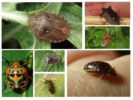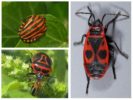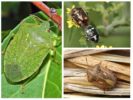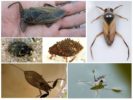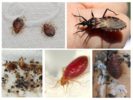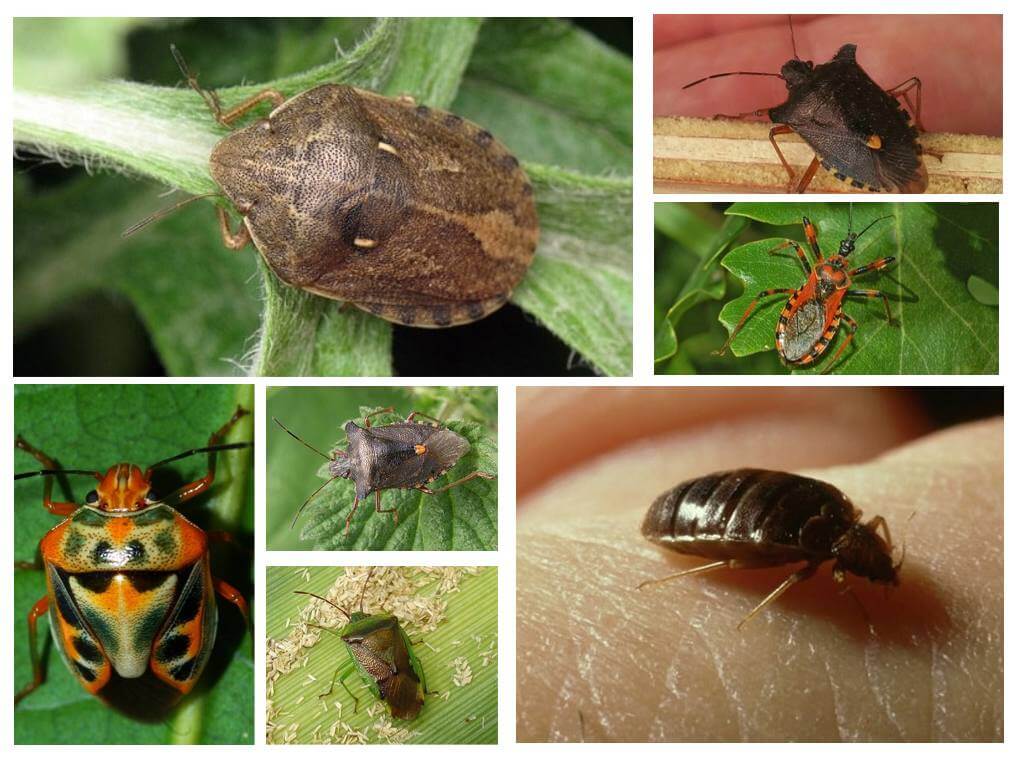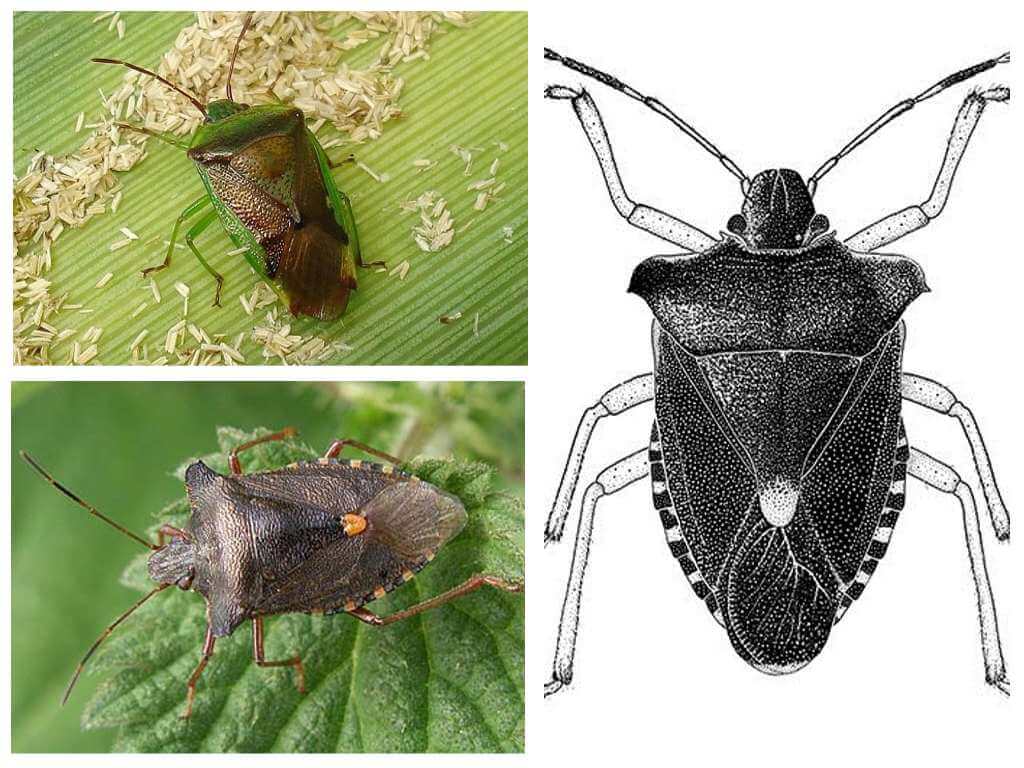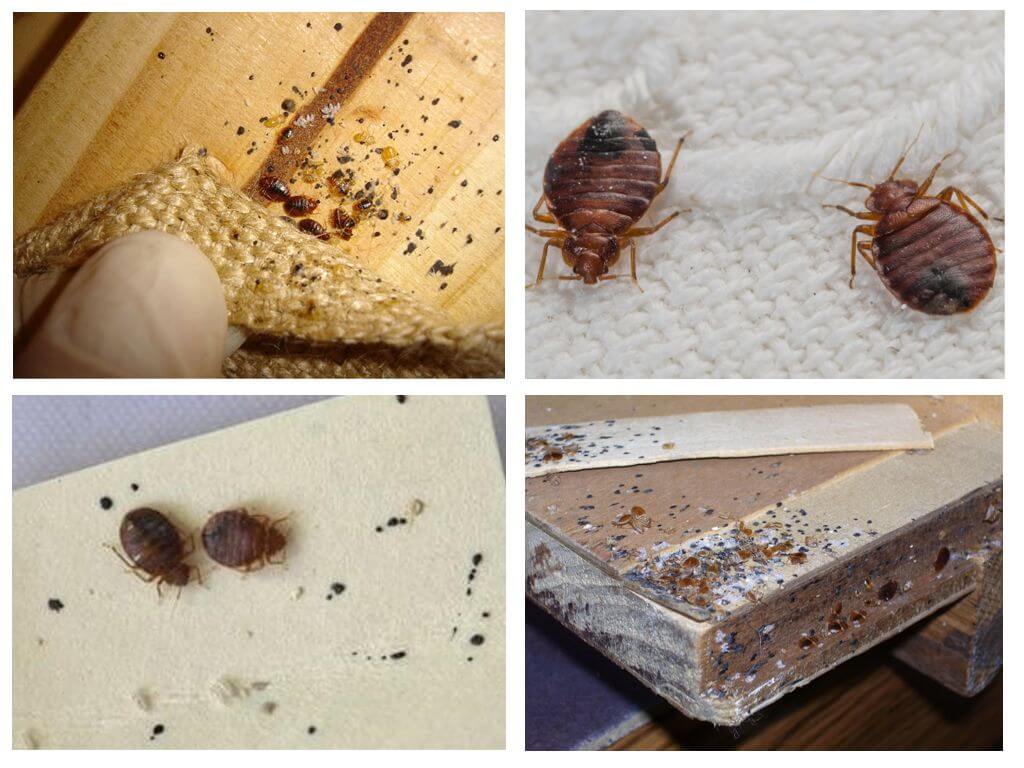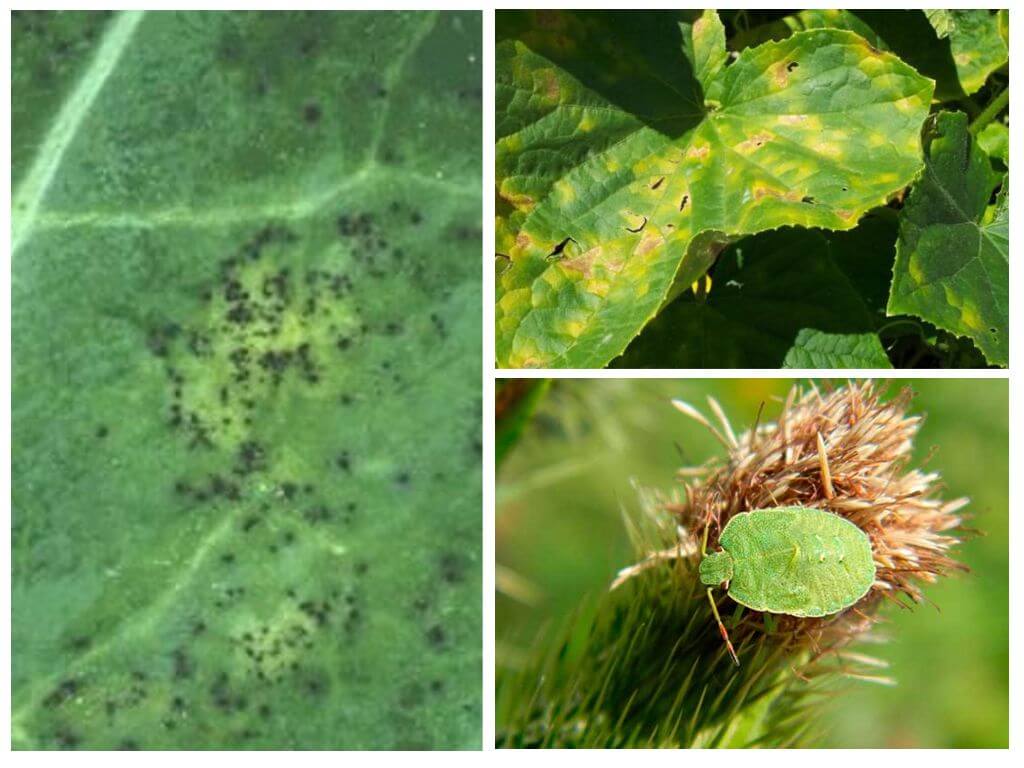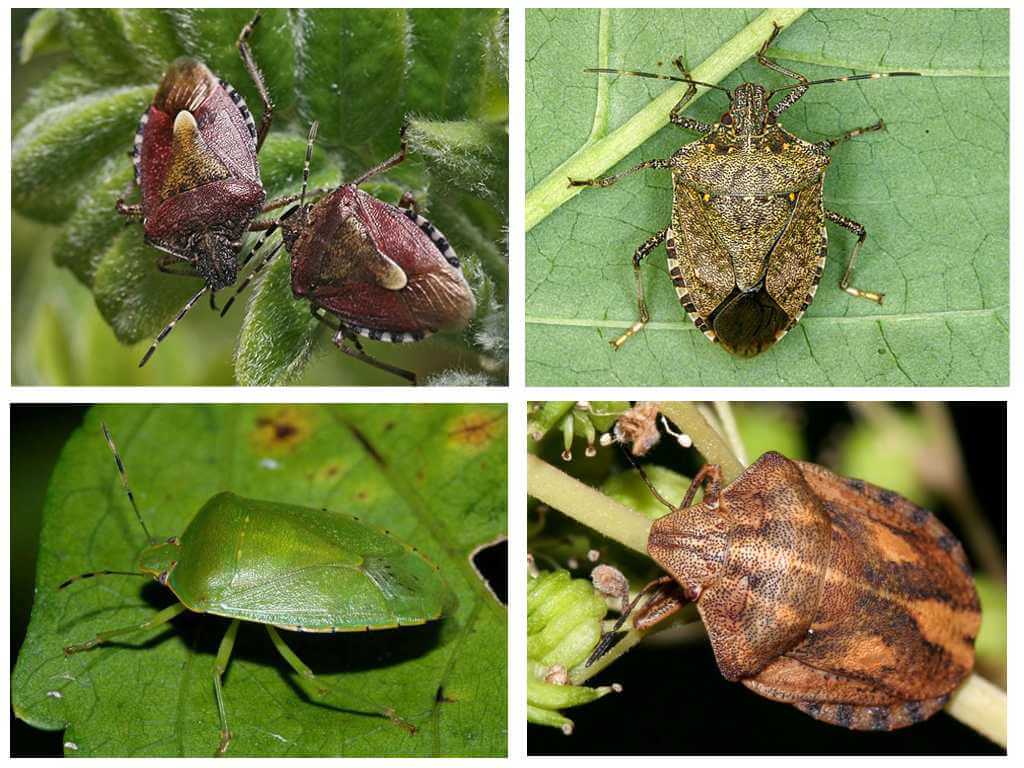- Turtle, arboreal, predator, shield bug, forest, bed bugs
- Useful representatives of the suborder
- Pest bugs
- Water bugs
- Parasitic bugs
All varieties of bedbugs have a number of specific features that are inherent in the representatives of the order of semi-rigid bugs. These include:
- Mostly small body sizes, quite often rounded;
- Durable chitin shell, making the insect invulnerable to enemies;
- The presence of wings in some and the absence of others. Some street bugs have lost them due to uselessness, while other species are able to cover significant distances;
- All types of bugs have the same device of the oral apparatus. Insects pierce a plant or skin of a warm-blooded organism and suck out substances necessary for nutrition. The two-channel system of the piercing-sucking mouth apparatus allows predators to inject a special enzyme into the victim's body that facilitates the saturation process.
- Depending on the lifestyle, some species of bugs are active in the daytime, while others prefer to attack their prey at night;
- Many species of the family of Hemoptera have special glands that secrete an unpleasant smelling secret. The smell helps scare away enemies and attract a partner.
The mere mention of bed bugs causes a storm of negative emotions in people. But, like among all living organisms, in the family of Hemoptera there are harmful and useful species of insects. Some help a person preserve crops, while others, on the contrary, destroy him. Some prey on their own kind, and the most aggressive representatives feed on human blood. Description of different types of bugs will help to understand the full variety of these representatives of the fauna. Photos and names of all useful street representatives of the Heteroptera suborder are presented below.
Useful representatives of the suborder Heteroptera (semi-winged)
The world of street insects is very diverse. A person who thinks rationally is used to evaluating representatives of the natural environment depending on the benefits they bring. Pests are mercilessly destroyed. The bright, intimidating coloring, which some street half-winged bugs have, fulfills its purpose - nobody touches them.
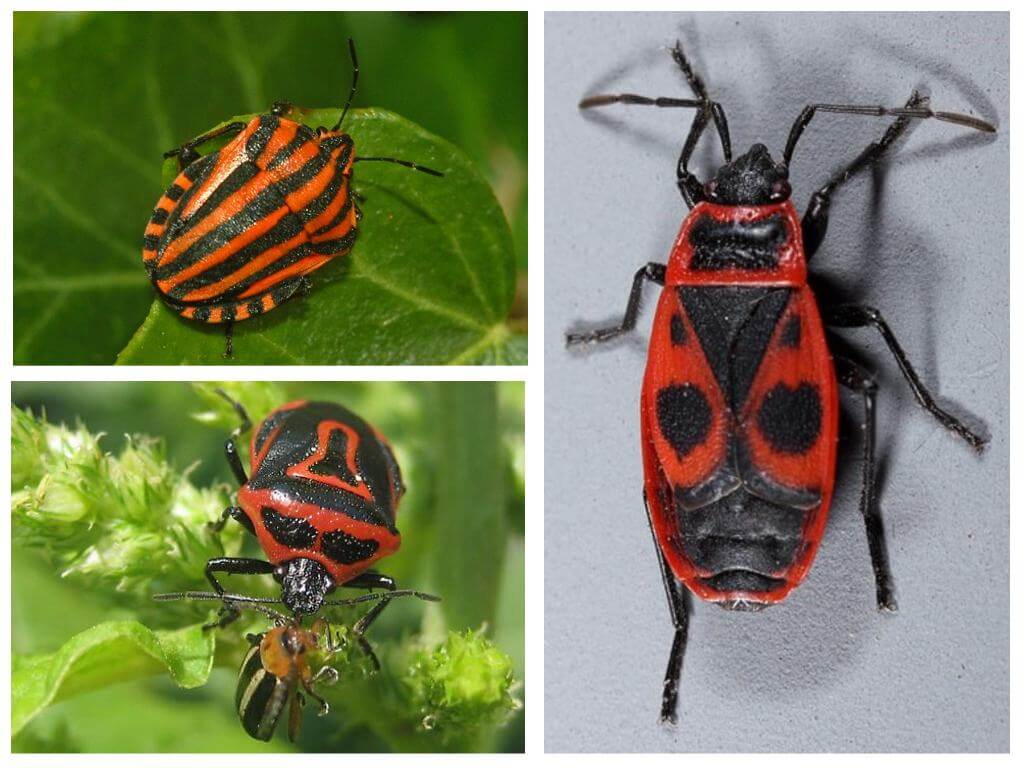
- The bug is ruled, or, as it is also called, Italian, is often found in front gardens and in summer cottages. Black-red, as if under the ruler drawn stripes adorn his small body.This formidable beetle is only interested in umbrella plants and therefore will not bring much harm to the garden. To cope with it is quite easy - to collect manually and destroy. How these street insects look can be seen in the photo in the article.
- Winged beetleHe’s a soldier, another prominent representative of harmless insects. They feed on fallen leaves and the remains of dead invertebrates.
- Zikron blue, related to the type of street bugs predators imported from England, makes an invaluable contribution to the preservation of the crop. It feeds on eggs and small larvae of leaf beetles. This species of bugs successfully fights with the Colorado potato beetles, ensuring the integrity of potato plantings.
- Perillus is another person’s assistant in the fight against the Colorado potato beetle. He was brought to Russia from Mexico. The advantage of street insects is that in addition to eggs, they cope even with adults.
- Flower bugs are specially bred to control pests that have settled in closed ground. Their food is aphids, ticks, larvae and eggs of some insects.
Pest bugs
In addition to the useful inhabitants of farmland, pests inflicting heavy damage live on personal plots and on farm fields. Photos and descriptions of the main characteristics of street pests can be found below.
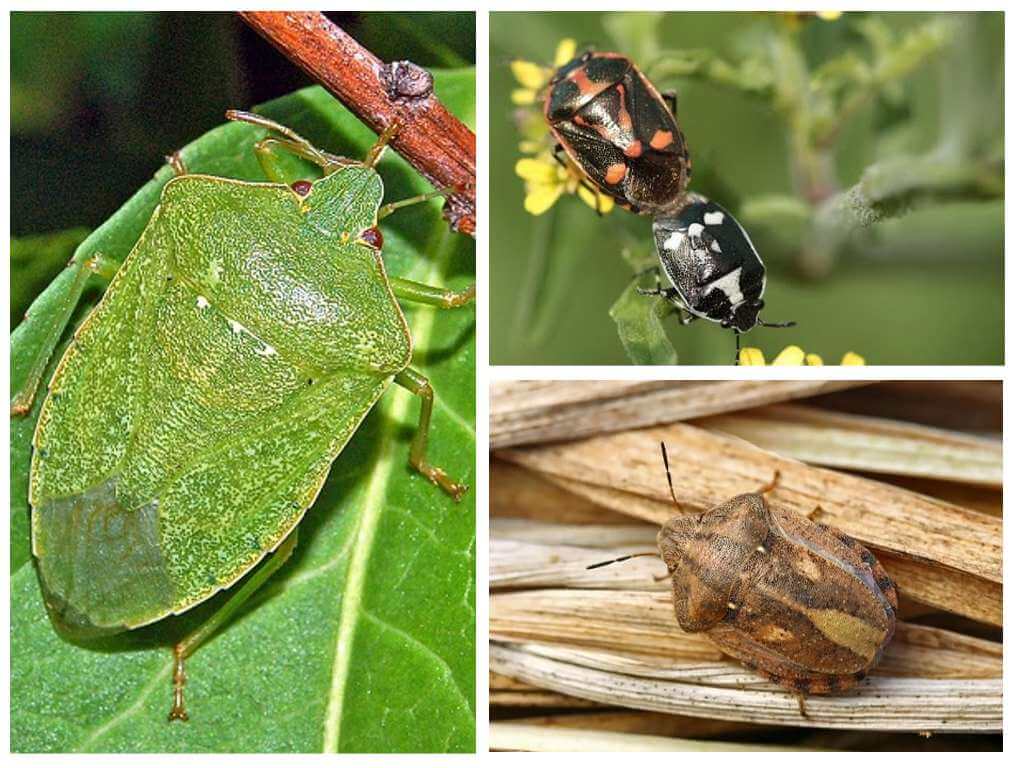
- The representative of cruciferous street bugs, dressed in a red-black outfit, is cracking down on cabbage plantings. He is helped by a rapeseed parasite, which has a bright blue-green back with spots and stripes of white color. They attack crops of radish, rapeseed and turnip. Defiant coloring serves as protection for street bugs from natural enemies. In case of special danger, they use the ability to emit an unpleasant odor. Special glands, which are endowed with street bugs, produce a secret containing cimicic acid. She creates a disgusting aroma that protects the insect, so that it belongs to stink bugs.
- Light green shieldbetter known as berry bug - a pest that has chosen the planting of raspberries and gooseberries. By autumn, it changes its color to brown, disguising itself as fallen leaves. The street bug feeds on the juice of berries, but can also destroy cereal crops. Berries due to a specific smell become completely unusable.
- Bed bug bug - a nondescript gray creature, a malicious pest of landowners. The uncomplicated pattern on the chitinous shell of a street insect makes it invisible on ripe cereal ears. Wintered insects attack the young shoots of seedlings, depriving them of the opportunity to develop. Larvae emerge from the eggs during the ripening period of the ear and damage it. The grain becomes unsuitable for the preparation of flour and loses its germination capacity. Turtles, along with other pests of cereal crops, ravaged and made more than one field unusable.
Interesting! One chicken released on the field can destroy up to one and a half thousand bug bugs per day.
Water inhabitants
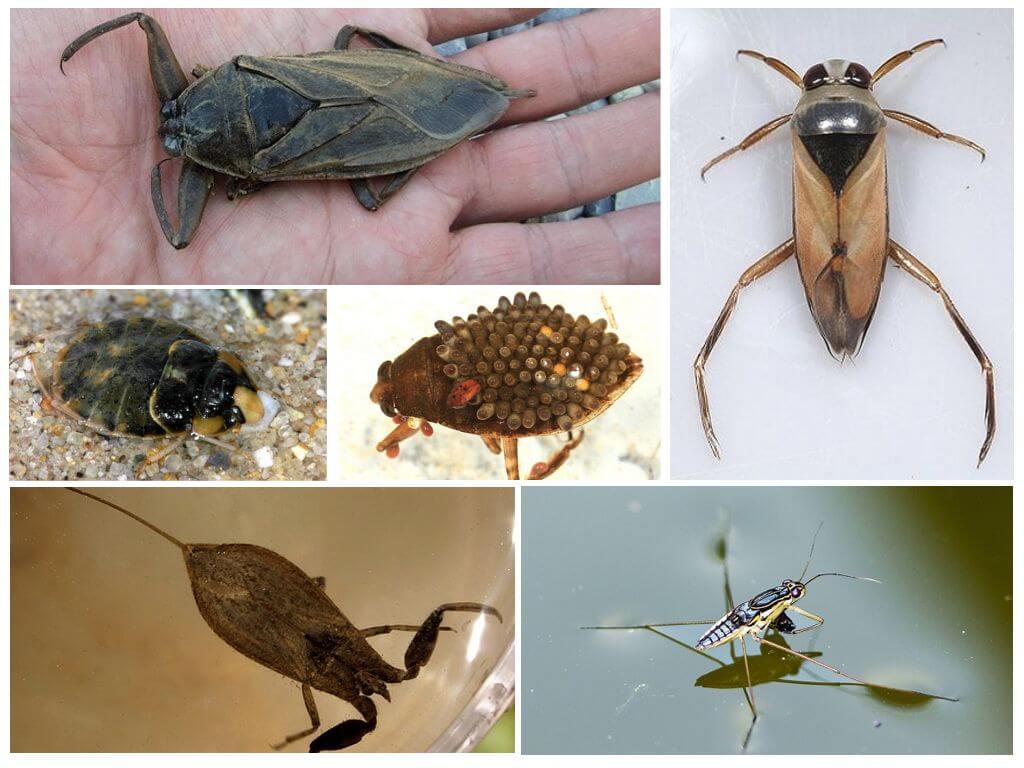
Bedbugs did not ignore the water areas.
- Water stride nimble - this type of representatives of the family of street bugs can be found in any pond. A small insect has long legs, allowing it to move along the surface of the water. The movement of a water strider is chaotic, it quickly changes direction. The special structure of the legs allows it to glide over the water, quickly approach the insects that have fallen into the water in order to suck all the juices out of them. In winter, this type of street bugs leaves water bodies and hides in fallen leaves.
- Water scorpion is another species of bugs that live in the aquatic environment. This species of insects lives in shallow water, because they absolutely do not know how to swim and crawl along the bottom in anticipation of another victim. The water scorpion breathes with the help of a special tail process that exposes above the water.
- Gladysh.An interesting fact is that the representatives of the bugs live in the underwater world. Gladysh lives up to its name, since its body resembles a boat, cleverly and quickly dissecting the thickness of the water. He prefers ponds with stagnant water, but can settle in a puddle or barrel located on a personal plot. This species is able to fly long distances at night, in search of food. The bite of a street bug feels like a bee sting, but is not dangerous to humans. Smoothie can attack not only insects, but also small fish.
- The giant belostoma looks intimidating. Leads list of giant water bugs. The forelimbs of a street bug resemble cancer claws, and it is unlikely that the victim will break out of them. Due to its impressive size (more than 10 cm) it is able to attack frogs, fish and turtles. The female Bialystoma lays eggs on the back of the male, who is patiently carrying them. In Russia, this species of bugs does not live.
- Plautus vulgaris belongs to the species of bugs living in water. He has a powerful dark green body and paddle-like, hairy paws. This species of street bugs preys all day on fry, larvae of insects and mollusks.
Parasitic bugs
In the family of Hemoptera there are species of bugs that cause particular concern and trouble for people. Adults feed on the blood of humans and warm-blooded animals. Scientists have several dozen types of domestic bloodsuckers. They have such characteristic features: a small, flat body, increasing several times after saturation. Wings are absent as unnecessary, since the insect is able to travel very long distances very quickly, even climb to the ceiling and from there plan for its prey.
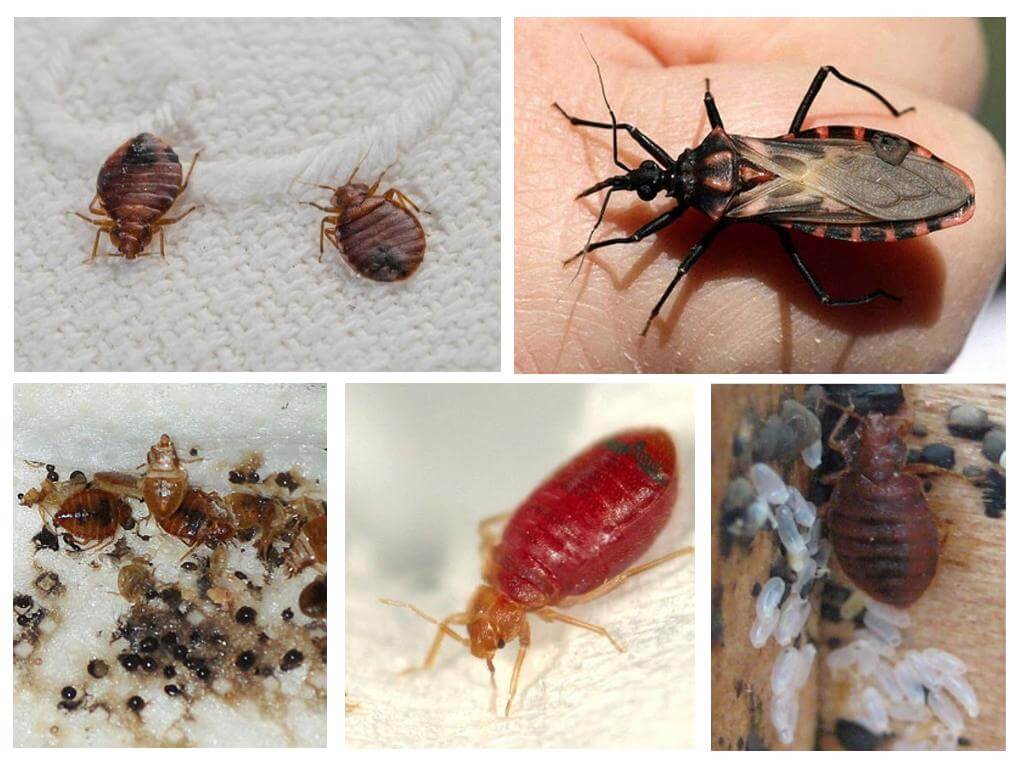
Homemade bedbugs breed fast and they can fill the whole house, depriving people of a quiet life. They are nocturnal, but sometimes attack their victim in the daytime. At first signs of parasites in the apartment and the discovery of their clusters, it is necessary to immediately take measures to fully killing bugs. In Moscow and other cities there is a huge amount of necessary drugs used in the domestic environment to get rid of bed bloodsuckers.
Bed bugs have immediate relatives living in countries with hot climates. This is a burning bug that looks like a congener. He moves more slowly, bounces slightly, does not tolerate cold. Insect bites cause an allergic reaction and are more palpable in strength. The most dangerous for humans is triatom bugliving in latin america. His bite can cause anaphylactic shock, and he is also a carrier of the deadly Chagas disease. Photos of different types of bugs, posted in the article, will allow you to carefully consider all representatives of the family of half-winged.
